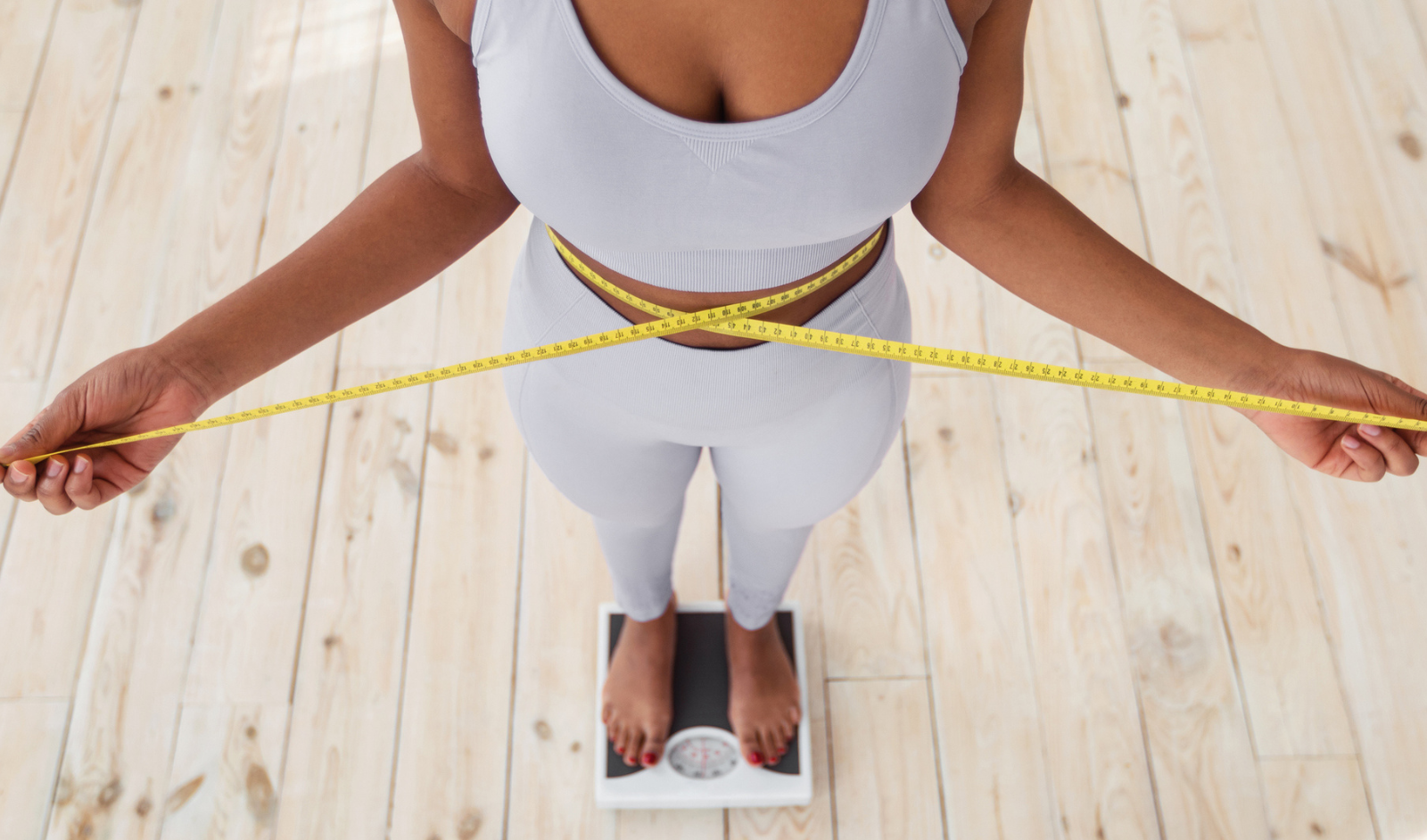“I’ve hit a weight-loss plateau!” 5 Tips For Breaking Through
What do you do when the scale hasn’t moved for a very long time? Get tips from the faculty at the Pritikin Longevity Center in Miami, Florida, for breaking through weight-loss plateaus. Tip No. 1 is: Keep up the motivation, but tone down the tension.

But Rob has now hit a weight-loss plateau. He’s trying to “crack the sub 210 weight threshold, and I need some tips. I am exercising hard and following the Pritikin Eating Plan except for the occasional over indulgence of wine among friends… I’m afraid of losing my momentum.”
Do you feel the same? Are you struggling with a weight-loss plateau? Here are 5 top tips from our faculty at the Pritikin Longevity Center for breaking through a weight-loss plateau.

Learn More About Pritikin
5 Top Tips For Breaking Through A Weight-Loss Plateau
-
Keep up the motivation, but tone down the tension.
“Keep up the motivation, be patient, and try to change your focus for a short time,” advises the behavior change experts at Pritikin. “Sometimes, too much focus and concentration will make one more stressed. This will slow the body down. Just tell yourself to let go, do some meditation or enjoy some yoga classes, and you will progress just as you are supposed to in time.”
One very important thing to keep in mind is that by exercising daily, eating well, and maintaining your emotional health, you are definitely doing the right thing. This is a lifestyle you are committed to, not the “4-day diet” or the “15-day miracle plan.” Temporary efforts produce temporary results. With the Pritikin Program, you’re in a process. Plateaus can happen. But you’ve made healthy living your way of living, which means all realistic goals can and will be achieved.
The really good news is that most plateaus are temporary and short-term.
-
Always remember one basic rule: Weight loss happens when we take in fewer calories than we burn.
If you’ve been stuck in a plateau for weeks, it usually indicates that calorie input (what you’re eating) is equal to calorie output (what you’re burning through physical activity). The only way to break through a weight-loss plateau is to cut calorie intake further and/or burn more calories through exercise. What you’re aiming for is input that is lower than output.
The following checklist can help you pinpoint the specific steps needed to forge past stubborn plateaus. It makes sure you’re eating plenty of foods that curb hunger, keep you satisfied, and keep calorie input low.
If you answer “no” to 4 or more of these 12 questions, breaking through your weight-loss plateau may depend on your turning one or more “no’s” into “yes.”
- Are you eating 5 (preferably more) servings of vegetables a day? Optimally, you want vegetables taking up at least half of your lunch and dinner plates.
- Are you avoiding dry, highly processed foods like chips, crackers, candy bars, cookies, pretzels, dried cereals, bagels, breads, and dried fruit? All dry foods pack a lot of calories into very small packages. One fat-free cookie, for example, has the same number of calories – 60 – as one whole cantaloupe. Yes, that cookie may be fat-free, but it’s dense with calories. And who can eat just one?
- Are you avoiding calorie-containing beverages like soft drinks, alcohol, milk shakes, and fruit and vegetable juices? Liquid calories do not register with your satiety center the same way that calories from solid foods do. That means you don’t compensate for the calories you’ve drunk by eating fewer calories later in the day. So unless you’re that rare person trying to gain weight, you want to seriously cut down on liquid calories – or cut them out altogether.
- Do most of your complex carbohydrates come from unrefined, water-rich sources like hot whole-grain cereals, whole-wheat pasta, brown rice, and starchy vegetables like potatoes, yams, and corn?
- Do your meals consist of foods prepared without added fat, salt, and sugar?
- Do you begin most of your meals with a salad (using a very low-calorie dressing) or veggie-rich soup?
- Do you limit your animal food (fish, white poultry, lean game meat) to 4 ounces or less per day, including when you dine out?
- Do you dine out fewer than 4 times per week?
- Are you listening to your body’s hunger and satiety cues? “Eat only when you’re hungry,” advises Pritikin registered dietitians. That doesn’t mean you wait till you’re famished and grabbing everything in sight. Rather, listen for those little hunger pangs that tell you it’s time to eat. “Stop when you are full, not stuffed,”.
- If you drink alcoholic beverages, are you limiting your intake to no more than 4 drinks per week?
- Are you cardio exercising at least 5 (preferably 6) days per week? And are you including at least 1 (preferably 3) bouts of interval training?
- Are you including strength (resistance) training at least 2 to 3 times per week?
Did you say “yes” to at least 9 of the above 12 questions? If so, CONGRATULATIONS! But now, let’s dig deeper. Here are more suggestions for getting past your weight-loss plateau.
-
Shoot For 90 Minutes of Cardio.
To overcome a plateau, increase your cardiovascular exercise time to 90 minutes most days of the week. You don’t have to do all 90 minutes in one bout. In fact, you’re better off doing two bouts of 45 minutes each. That’s because it’s easier to maintain a higher intensity (and therefore greater calorie burn) in two 45-minute bouts than in one 90-minute bout. Intensity wanes with long periods of nonstop exercise.
I would not recommend more than 90 minutes of cardio on a daily basis. You’ll burn out! And if you cannot fit two full 45-minute workouts into your day, break up one of them into several 10- to 15-minute interludes. Whenever you’re sitting, ask yourself, “Can I do whatever I’m doing on my feet, such as walking while I’m talking on the telephone, or hitting the treadmill while watching TV?” All these mini calorie burners can add up to major weight losses.
-
Change Up Your Routine.
Try new movement patterns, also called cross-training. When we move differently, the body recruits more muscle fibers and heart rate generally increases. The workout becomes more challenging, even for the same period of exercise time. We burn more calories than doing our old ingrained movements, and we boost our metabolism, which means more calories get burned even when we’ve stopped exercising. (Yes, a nice bonus!)
There are all kinds of ways to switch it up. If, for example, you’ve been using a treadmill and elliptical for your cardio workout, try stair climbers, swimming, cycles, and/or rowing machines. Or sign up for cardio-burning classes, like spinning, kick boxing, and latin dancing.
If you’re currently using machine weights for your resistance workouts, try free weights and/or body weight movements. Mix it up even in the same exercise session. It’s fun, and it makes exercise time fly!”
Another great way to ramp up your calorie burn is to try a new sport – or resume one you’ve enjoyed in years past. Love tennis? Sign up for a tennis league at a local club. Love skiing? Get out on the slopes. (This writer recently took off for three days of skiing and took off three pounds. All that huffing and puffing in the snow really paid off – and was a blast to boot.)
Love spending time with the kids and grandkids? Fit in “fun ‘n fitness” time. Shoot hoops in the driveway. Knock around a volleyball or soccer ball. Rollerblade together. Try out get-fit video games. The more you move, the more calories you burn, and the more fun life is.
-
Don’t Forget Your Strength Training.
Some of our guests at Pritikin do a great job of maintaining their cardio workouts when they return home but let the strength training slip away. That’s a major slip up because it’s strength training, more than anything else, which maintains and increases muscle mass. The more muscle mass you have, the higher your metabolic rate, and the more calories you burn, even at rest. Lean body mass uses five times the calories as fat mass. Yes, muscle mass turns you into a lean, mean, calorie-burning machine.
Now, do keep in mind that gaining muscle mass and losing fat mass may cause delays in actual pounds lost (because muscle weighs more), but that’s okay, because you’re losing inches. A pound of muscle takes up less space than a pound of fat. That’s why we see people at Pritikin who lose two dress sizes or two pants sizes with just a five-pound weight loss. What they’re achieving is far more important than what the scale says. They’re building a body composition that makes them leaner, fitter, more toned, and much healthier. And when they return home, the compliments flow. “You look great!” friends and family exclaim. “You look so thin!”
You bet you do. Keep it up! There’s a very good chance that if you’ve hit a weight-loss plateau, you’ll break through it, and reap the many other benefits of Pritikin living, such as a leaner body, a healthier life, and a happier one.

Get All the Details of a Stay at the Pritikin Center in Your Inbox